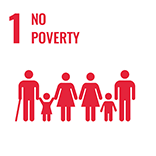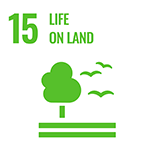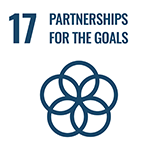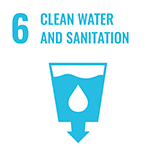Wetland management and conservation in the Pozuelos Biosphere Reserve, Argentina
Summary
This program works with the communities and other local actors in the recovery of degraded wetlands in the Pozuelos Lagoon, northern Argentina, through the construction of small dams that accumulate water, increase the productivity of the wetland and recover grazing areas.
Livestock is one of the vital economic activities of the peoples that inhabit the Puna of northern Argentina. In this region, increases in temperatures without significant changes in rainfall, configure a scenario of increasing water stress with impacts on the functioning of ecosystems and a decrease in productivity. In the Pozuelos lagoon, the overgrazing of domestic cattle (mainly sheep and llamas) has synergistic effects with the drought. Added to this, the remoteness of the populated centers and the lack of economic opportunities generate a process of emigration of the young population, affecting traditional productive activities. In addition to the construction of small dams, this program also implements actions for the reconversion of excavated artificial drinking holes for cattle with solar pumps for the extraction of water for livestock consumption. In this case, the conservation of wetlands and the implementation of methods for efficient use of water offer a clear opportunity for adaptation to climate change.
Overview
- Location:
- Implementation sites:
- Single country
- Single location
- Mountain region:
- High Andes
- Province:
- Jujuy province
- Site locations:
Pozuelos Biosphere Reserve
- Solution scale:
- Ecosystem type(s):
- Solution type(s):
- Sector(s):
- Climate impact(s) addressed:
- Impact time-scales:
- Co-benefits:
- Implementation timeline:
- 2017 - 2024
- Sendai targets:
Solution details
Main beneficiaries & outcomes
150 families of shepherds of the Kolla ethnic group that inhabit the surroundings of the Pozuelos lagoon, and in particular the villages of Carahuasi, Ciénego Grande, Guayatayoc, Lagunillas, Pan de Azúcar, Pasajes, Pozuelos, Rinconada and Rodeo.
Planning and implementation
Program planning and coordination: Wetlands International / Fundación Humedales.
Field implementation of CCA actions and strategies: Wetlands International / Fundación Humedales, in collaboration with communities and local partner institutions: APN, INTA, Sub-secretariat of Family Agriculture and Territorial Development of the Nation (Jujuy / SAF Coordination) and Ministry of the Environment of the province of Jujuy.
Finance
This case is part of the Wetlands International’s Programme “Saving High Andean Wetlands for People and Nature”, which has received funding through a donation from the DOB Ecology Foundation (philanthropy). Field implementation of CCA actions and strategies is possible thanks to a counterpart in kind from the aforementioned local partner institutions. Total cost (2017-2024) = € 400,000.
Innovation
The opportunity to test management with participatory approaches and the valuation of the use of traditional practices implies the strengthening of the communities’ capacities to adapt to accelerated climate changes. One of the key aspects is to create awareness about the importance of wetlands and about the ecosystem services that they provide to society, as well as about the need to conserve them given their relationship with water in the headwaters of the basin and their contribution to productive activities.
Performance evaluation
The impact of the project’s field interventions is being monitored based on the following indicators: number of hectares under management with restoration actions (goal = 100 ha), hectares under best grazing management practices (goal = 8,000 ha), vegetation status and primary productivity of wetland areas, installed solar pumps (goal = 10 pumps) and number of families participating in the project (goal = 150 families).
Long term project sustainability and maintenance
Local alliances / strengthening of local institutions – Alliances have been established with local institutions with a permanent presence in the territory, such as APN, INTA and SAF. These institutions are partners in the program and in the implementation of management actions.
Local trainings.- Training is carried out for cattle ranchers and other local inhabitants on the implementation of best grazing and management practices, and conservation of wetlands and water resources, in order to increase their technical capacities.
Alliance with the government of Jujuy – Cooperation framework agreement signed with the Ministry of the Environment covering the province and facilitation of the development of the management plan for the Laguna de los Pozuelos Biosphere Reserve.
Capacities for design and implementation
Knowledge
Local alliances / strengthening of local institutions – Alliances have been established with local institutions with a permanent presence in the territory, such as APN, INTA and SAF. These institutions are partners in the program and in the implementation of management actions.
Local trainings – Training is carried out for cattle ranchers and other local inhabitants on the implementation of best grazing and management practices, and conservation of wetlands and water resources, in order to increase their technical capacities.
Alliance with the government of Jujuy – Cooperation framework agreement signed with the Ministry of the Environment covering the province and facilitation of the development of the management plan for the Laguna de los Pozuelos Biosphere Reserve.
Technology
Remote sensing and geographical information systems are valuable tools to support the planning and monitoring of wetlands management and livestock raising practices. The use of drones is helping in monitoring activities and virtual platforms are facilitating communications and planning at distance.
Political / Legal
The Regional Strategy for the Conservation and Sustainable Use of High Andean Wetlands (Ramsar Convention) and the Initiative 20×20 for Ecosystem Restoration in LAC provided a general framework for the programme and its interventions. More specifically, the development of the management plan for the Pozuelos Biosphere Reserve offered a good framework to promote and replicate the solution in other locations within the basin. Implementation was fully supported by local governmental agencies like the National Park Administration of Argentina (APN), INTA-IPAF and SAF.
Institutional
The programme and the implementation of the solutions was strongly supported by the National Park Administration of Argentina (APN) and other governmental agencies (INTA-IPAF, SAF). The solution was implemented in collaboration with these local partners, which have their own working plans, promoting positive synergies. This collaboration was crucial for the successful implementation of the programme interventions and monitoring of solutions.
Socio-cultural
A stakeholder analysis was developed at the very beginning of the process of implementation. The social context was assessed and considered in the planning phase, and the programme was designed to contribute with responses to local needs. The local communities were fully involved in the implementation of the solution.
Outlook & Scalability
Barriers and adverse effects
The main barrier was the Covid-19 pandemic and the restrictions to circulation that affected and delayed the implementation of the solution. We partially overcame this problem with the strong collaboration with our partners on the site. Besides, we underestimated how long it takes to bring about change in traditional livestock practices. No adverse effects were identified.
Transformation and future outlook
Not available information at this point.
Potential for upscaling and replication
Inclusion of the program’s approaches and strategies in the “Pozuelos Biosphere Reserve Management Plan” (under development) and in the “2019-2024 Management Plan of the Laguna de los Pozuelos Natural Monument”.
The same strategies are being replicated in Salinas Grandes in Argentina and in Lago Junín and Carampoma-Marcapomacocha in Peru, with funding from the same program. Its ambition in the medium term is to expand to other sectors of the Puna and replicate these strategies in other countries within the region.
Finally
Contacts of key institutional partners involved with the solution planning and implementation
Román Baigún ([email protected])
Key references/links
Amaya, N. E., Blanco, D. E., Chamorro Cuestas, A. F., Gonnet, J. M., Hegoburu, C., & Sosa, H. J. (2019). Conservación y manejo de vegas altoandinas en Argentina y Perú. Dos estudios de caso. Buenos Aires, Argentina: Fundación Humedales/Wetlands International.
Gonnet, J.M., Amaya, N., & Sosa, H. (2018). Plan de manejo sostenible del pastoreo de ganado en el humedal de Laguna de los Pozuelos, Jujuy, Argentina. Proyecto Conservando los humedales altoandinos para la gente y la naturaleza. Buenos Aires, Argentina: Fundación Humedales / Wetlands International.




(0) Comments
There is no content